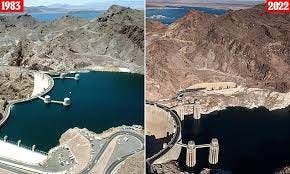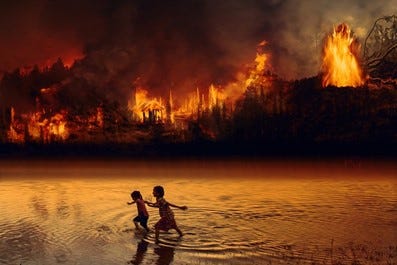The Alarming Reality
Five ways droughts can affect our lives
1- Food. Droughts result in crop failure and the disappearance of pasture and as a result higher food prices. In 2022 $20 billion worth of crops were lost in the United States due to drought which pushed overall food prices up more than 11%. During the same year 34% of crops and livestock were lost in developing countries, contributing to a 23% rise in food prices worldwide and worsening hunger and malnutrition, already a problem among at least 10% of the global population.
Water: Dwindling precipitation and soaring temperatures are depleting surface water and groundwater reserves worldwide. The repercussions will be devastating as water prices soar for both private consumption and crop irrigation, making water rationing a necessity. Countries like Tunisia, South Africa, and the United Kingdom have already been forced to impose periodic limits on water consumption. By 2025, half of the global population will be grappling with water scarcity that can result in the displacement of 700 million people. In the United States, as Lake Mead dropped to historically low water levels, the seven U.S. states that draw water from the Colorado River were warned by the federal government to reduce their consumption by 25%. A target these states have so far failed to meet.
1- Electricity: Dwindling water levels behind dams and diversionary structures will render hydropower, the cheapest and cleanest energy source, far less available throughout the world. To close the power gap left by declining hydroelectricity, countries will be forced to use the more expensive and more polluting oil, gas, or coal, further limiting access to a reliable supply of electricity in poorer countries and accelerating the rise in temperatures and more frequent and long-lasting droughts. Hydropower makes up 6.2% of total U.S. electricity output. Worldwide, it produces 17% of electricity. It is the source of most of the electricity used by 800 million or 10% of the world’s population who live in 28 developing countries.
2- Wildfires. Lack of rain and low humidity dry out trees and vegetation, turning them into fuel for wildfires. The number, severity, and size of wildfires have increased throughout the world. In the United States in 2021, 58,985 wildfires consumed more than 7 million acres. In the summer of 2023, more than 6000 fires consumed nearly 42 million acres in Canada. The number of very large fires – those consuming more than 50,000 acres – is expected to increase six
fold in the western United States by the middle of the century.
In addition to the environmental and economic devastation, wildfires are particularly harmful to children, older adults, and those with asthma, bronchitis, heart disease, or diabetes. They can also result in depression, anxiety, and even PTSD which in turn can damage the heart and brain. Smoke from wildfires can also endanger livestock health, reduce crop yields and quality, and thus affect sustainable food security and price stability.
Floods. Long-term droughts increase the risk of flash floods due to dry, hardened soil that cannot absorb water. Flash floods move rapidly with little or no warning, sweeping away cars, houses, and bridges. Only “six inches of moving water can knock a person down. Two feet of moving water can sweep a vehicle away.”




